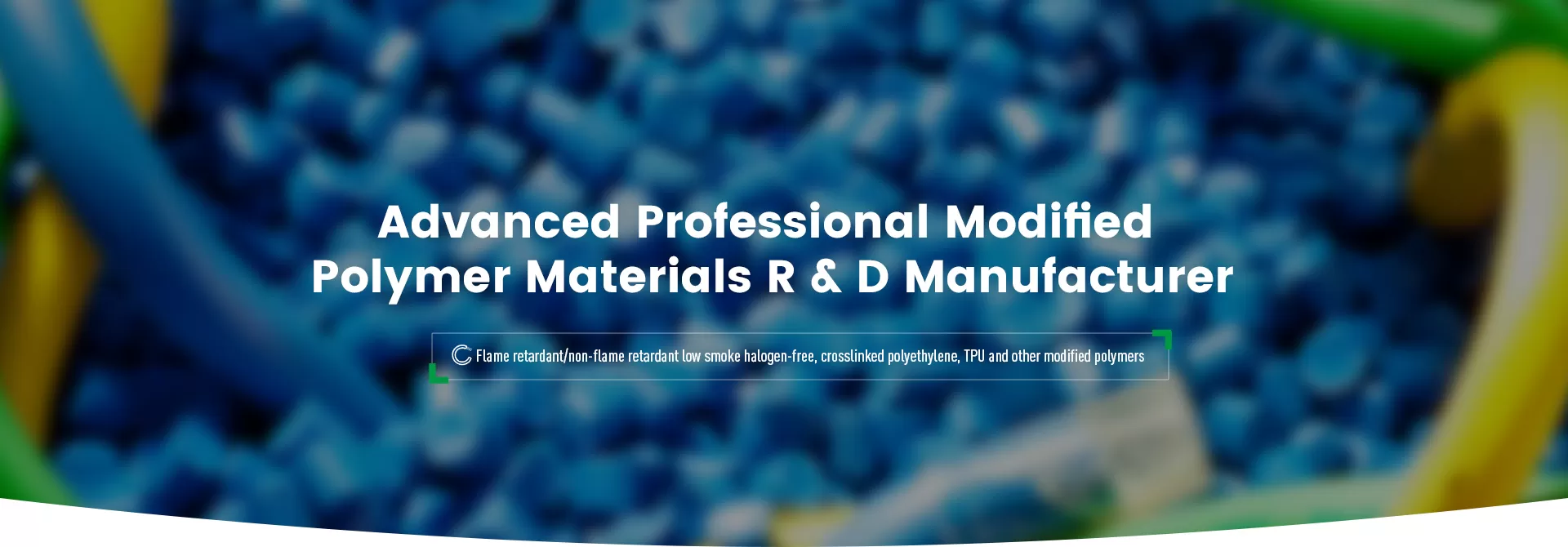

This product is made of high-purity resin as the base material, with flame retardants, reinforcing agents, antioxidants, etc. mixed and extruded into granules.
UL125℃ EPDM wire insulation material has excellent properties such as heat resistance and weather resistance, no precipitation pollution, meets the relevant requirements of Rohs, etc., and is easy to extrude and process.
Application Areas:
Power cord sheath materials, insulation materials, oil-resistant cable materials for submersible pumps, high-voltage and high-rubber content cable materials.
Irradiation cross-linked EPDM (ethylene-propylene-diene rubber) material is a high-performance cable insulation material that has been improved through the radiation cross-linking process to improve its heat resistance, mechanical properties and chemical stability.
Automotive cables:Used for wire insulation inside cars, especially in high-temperature environments such as engine compartments.
Industrial cables:In industrial environments, cables used for power transmission and control signals need to be resistant to high temperatures and chemical corrosion.
Heat-resistant cables:Used for cables that need to work in high-temperature environments for a long time, such as in transformers, motors and other high-temperature equipment.
Aerospace cables:In the aerospace field, used for internal wiring of aircraft and spacecraft, need to withstand extreme temperatures and environmental conditions.
Photovoltaic cables:In solar photovoltaic systems, used to connect photovoltaic panels and inverters, need to maintain stable performance in outdoor environments.
Petroleum and chemical cables:In the petroleum and chemical industries, used for cables that resist corrosion by oils and other chemicals.
Flexible cables:Due to the softness of EPDM materials, they are suitable for cables that need to be bent and moved frequently.
Weather-resistant cables:Used for outdoor applications, need to resist the effects of ultraviolet rays, ozone and other environmental factors.
The heat resistance, chemical resistance and mechanical properties of radiation cross-linked EPDM materials make them perform well in these applications. Through the radiation cross-linking process, the molecular structure of EPDM materials is changed to form a three-dimensional network structure, which improves its performance. This material is often used for cable insulation that requires high performance and long life.
| SN | Testing items | VALUE | Typicalvalue | UNIT | Test Method | |
| Physical Property | ||||||
| 1 | Specific Gravity | ≤ 1.55 | 1.45 | g/cm3 | GB/T1033 | |
| 2 | Hardness | 88±3 | 86 | Shore A | GB/T-531/ISO7619 | |
| 3 | Tensile Strength | ≥ 8.4 | 10.3 | MPa | GB-T2951.11 | |
| 4 | Elongation at Break | ≥ 250 | 420 | % | GB-T2951.11 | |
| Thermal ageing158℃ 144h | ||||||
| 5 | Tensile Strength after Ageing | ≥ 85 | 96 | % | GB-T2951.11 | |
| 6 | Elongation at Break after Ageing | ≥ 65 | 84 | % | GB-T2951.11 | |
| 7 | Flammability | VW-1 | -- | UL1581 | ||
| Environmental Requirement | ||||||
| 8 | Meet ROHS、REACH | |||||
| Material | EPDM Ethylene propylene Diene Monomer | |||||
| Color | Natural color | |||||
| Shape | Granular | |||||
| Remark | / | |||||